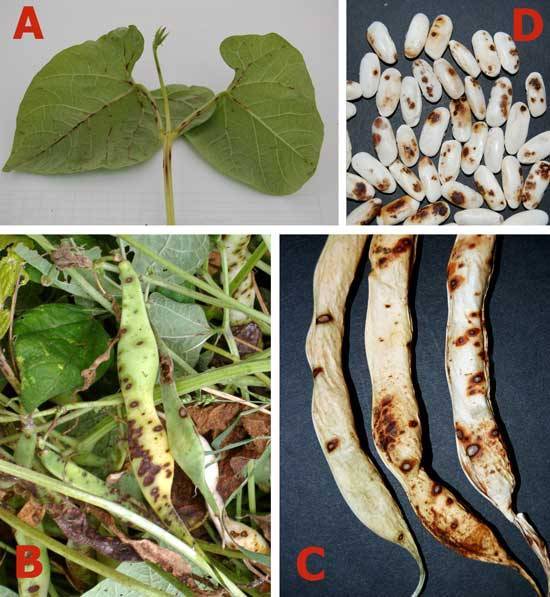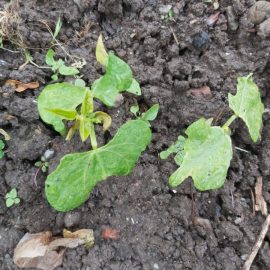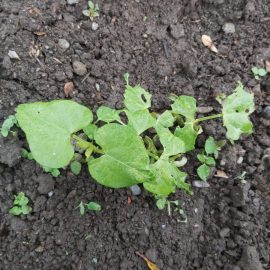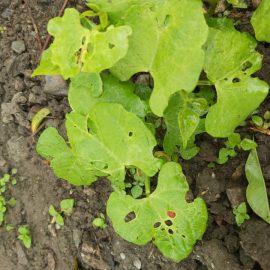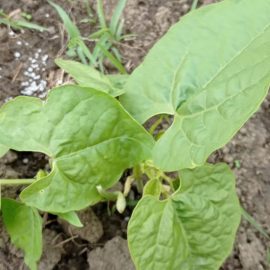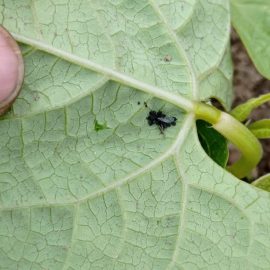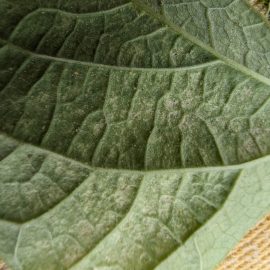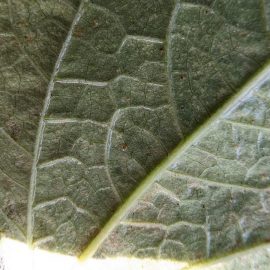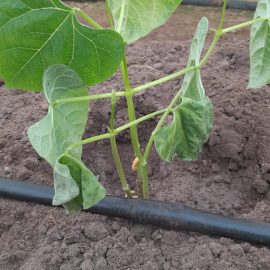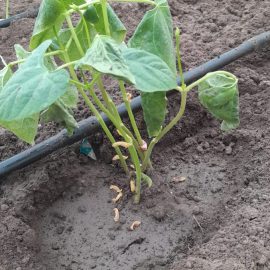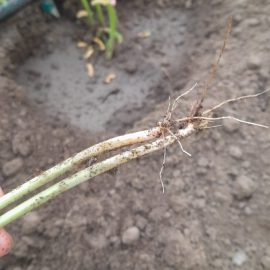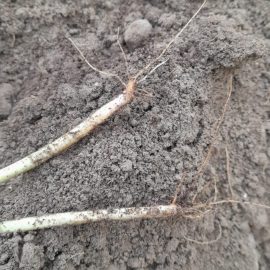Bean anthracnose (Colletotrichum lindemuthianum) – identify and control
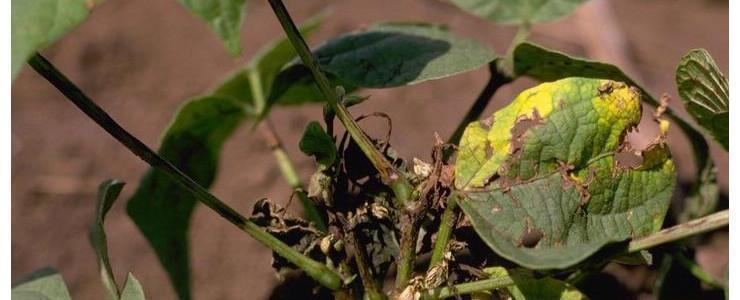
Bean anthracnose (Colletotrichum lindemuthianum) is found in every country with temperate climates, being more common in crops field beans.
Symptoms. Bean anthracnose is manifested in all phases of development, with all the above-ground organs (leaves, stems, fruits, and seeds) being infected.
Seedlings that emerged from infected seeds have wounds on the cotyledons. They are circular or elongated, blackish-brown in color, deepened in the tissues, which generally causes the death of the plants.
On the inferior part of the leaves, circular or irregular spots appear, brown-yellowish, with a reddish-brown edge that is arranged along the veins of the leaf. The infected tissues will necrotize and tear, and the leaves appear ragged.
Elongated wounds appear on the stems that deepen into the underlayer. The infection on the beans is the most characteristic, the most frequent, and damaging. Small, rusty spots appear on the beans. Over time they enlarge, become circular, deepen, and are bound by a reddish border.
These spots are at first isolated, then converge and show in their central part reddish dots, arranged in the form of concentric circles, which represent the acervuli of the fungus. From the beans, the infection penetrates the seeds, which have deep yellow-brown spots on them.
The pathogen. The fungus Colletotrichum lindemuthianum resists in the remains of diseased plants and as a mycelium in the seed. The seeds are the main source of infection in the next year. The spread of the disease is favored by the rainy periods of the year and by temperatures between 13-27ºC. The disease is more common in dwarf bean varieties, the most resistant being the Michigan variety.
Prevention and control. It is recommended to gather and destroy the plant debris, cultivate resistant varieties, use healthy seeds, apply crop rotation, in which the beans do not return to the same area of land earlier than 3-4 years. To control bean anthracnose, the use of specific fungicides is recommended.
Recommended products
-
You can find products on a different store
Change Store -
You can find products on a different store
Change Store -
You can find products on a different store
Change Store -
You can find products on a different store
Change Store -
You can find products on a different store
Change Store -
You can find products on a different store
Change Store -
You can find products on a different store
Change Store -
You can find products on a different store
Change Store -
You can find products on a different store
Change Store -
You can find products on a different store
Change Store -
You can find products on a different store
Change Store -
You can find products on a different store
Change Store -
You can find products on a different store
Change Store -
You can find products on a different store
Change Store -
You can find products on a different store
Change Store -
You can find products on a different store
Change Store -
You can find products on a different store
Change Store -
You can find products on a different store
Change Store -
You can find products on a different store
Change Store -
You can find products on a different store
Change Store -
You can find products on a different store
Change Store -
You can find products on a different store
Change Store -
You can find products on a different store
Change Store -
You can find products on a different store
Change Store














































































































































































































































































































































































































































